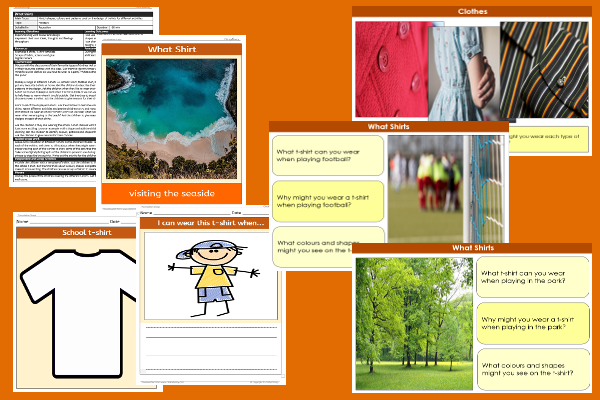Lesson Two – What Shirts

This curriculum topic teaching pack for the Foundation Stage gets the children to practise matching and describing some of the special shapes, colours and patterns used on the design of t-shirts for different experiences.
The class can select and combine a range of 2D shapes to make the design of a shirt that could be worn to school to wear for different lessons and experiences.
Download this teaching pack including a lesson plan, classroom activities and an interactive presentation to practise matching and describing some of the special shapes, colours and patterns used on the design of t-shirts for different experiences
Activities in this teaching pack include display posters to identify and describe the design of t-shirts that can be worn for different experiences, a template to produce the shape design for a t-shirt that could be worn to school and a worksheet to record word phrases that can be used to describe actions to match different t-shirts.
The interactive presentation gets the children to explore how to match and describe shapes, colours and patterns used on the design of t-shirts for different experiences.
This lesson is part of a curriculum topic scheme of work to get the children to produce items of clothing to wear on a holiday to a particular location by selecting and using shapes to represent different places. There are teaching activities for shared learning, differentiated worksheets to support independent learning and interactive presentations to introduce concepts and key skills.
-

Length Words
Practise using special vocabulary words to compare the lengths and sizes of objects found and used in different locations
-

Speaking Skills
Explain and model how to use voices clearly and expressively when interacting with others in different situations and scenarios
-

School Friends
Investigate, describe and model some of the special ways of providing practical, spiritual and emotional support to other pupils in the school
-

School Pictograms
Explore how to count and record the numbers of different pieces of school equipment that can be found in trays stored around the classroom
